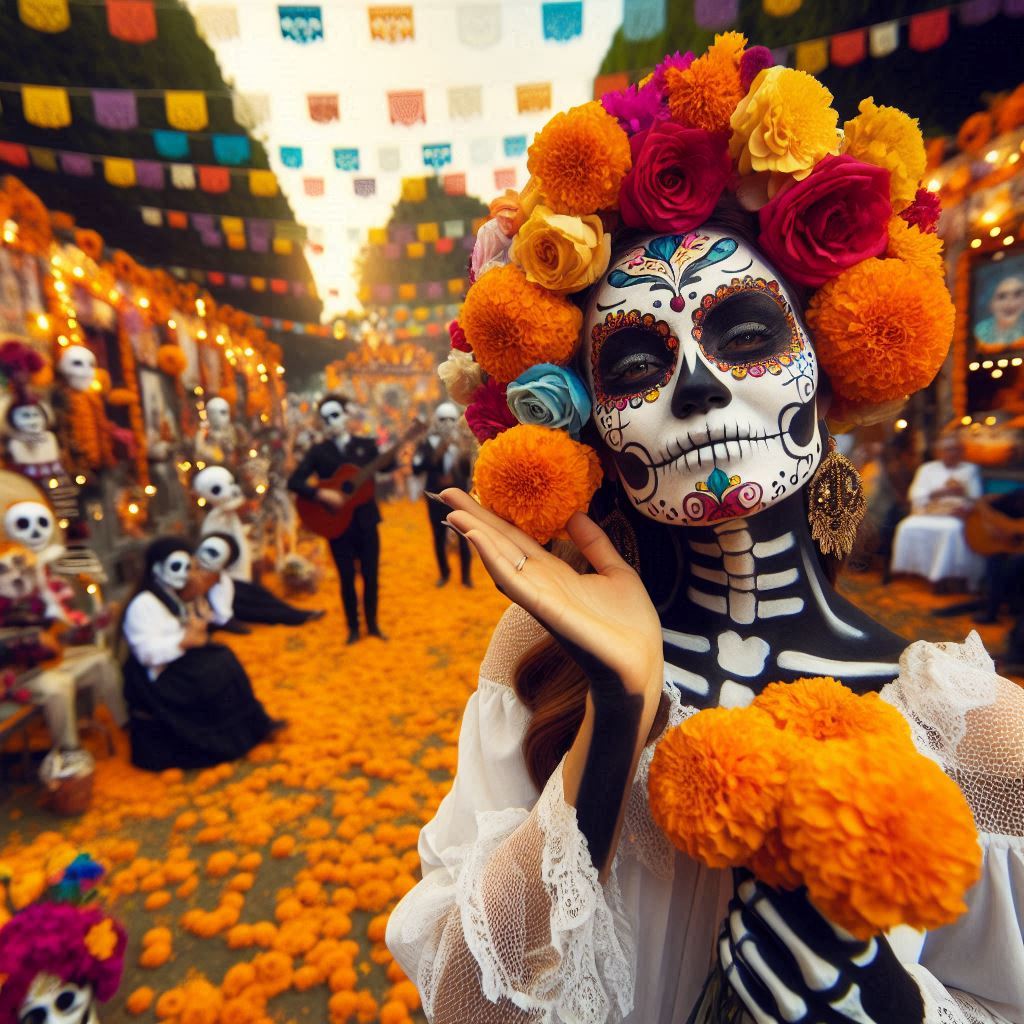Celebrating Day of the Dead: Traditions, Facts, and Significance

The Day of the Dead, or Día de los Muertos, is a Mexican holiday that honors and celebrates deceased loved ones. It is observed on November 1 and 2 and is a time for families to gather, remember, and pay tribute to those who have passed away. This holiday is rich in tradition and symbolism, blending indigenous Mexican customs with elements of Catholicism brought by Spanish colonizers. Far from being a somber event, the Day of the Dead is a vibrant and joyful celebration of life, memories, and the spirit of loved ones.
What is Celebrated on the Day of the Dead?
The Day of the Dead is celebrated to honor and remember family members and friends who have died. Families create beautiful ofrendas (altars) in their homes or at gravesites, decorated with photographs, favorite foods, marigolds, candles, and other meaningful items. It is believed that the spirits of the deceased return to the world of the living during this time, drawn by the offerings and love of their families. The holiday is a celebration of life, death, and the cycle of renewal, embracing death as a natural part of life.
Is Day of the Dead 3 Days?
While the main celebration spans two days—November 1 and November 2—some regions in Mexico may observe additional customs leading up to these dates. November 1, known as Día de los Inocentes or Día de los Angelitos, is dedicated to children who have passed away, while November 2, Día de los Muertos, is specifically for adults. Some families and communities begin preparations in the days leading up to these dates, cleaning gravesites and creating ofrendas, which is why the holiday may seem to last longer than two days in certain areas.
What Are 10 Facts About Day of the Dead?
- Dual Dates: The holiday is celebrated on November 1 for children (Día de los Inocentes) and November 2 for adults (Día de los Muertos).
- Altars and Ofrendas: Families build altars at home or at gravesites, decorated with items that represent the deceased, including their favorite foods, drinks, and photos.
- Symbolic Marigolds: Marigold flowers, called cempasúchil in Spanish, are known as “the flower of the dead” and are believed to guide spirits to their altars with their bright color and scent.
- Sugar Skulls: Decorated sugar skulls, or calaveras de azúcar, are used as decorations on altars, representing the departed in a colorful, whimsical way.
- Pan de Muerto: This traditional sweet bread, often flavored with anise and decorated to look like bones, is a customary treat prepared for the holiday.
- Calaveras: Calaveras, or skulls, are an iconic symbol of the holiday, often seen in art, costumes, and decorations.
- Celebration of Life: Unlike Halloween, Día de los Muertos is a joyous event focused on celebrating the lives of loved ones rather than fearing death.
- Parades and Festivals: Some cities, like Mexico City, hold large parades and public celebrations with costumes, face painting, and music.
- Indigenous Roots: The holiday combines Aztec, Toltec, and other indigenous customs with Catholic traditions introduced by Spanish colonizers.
- Not Solemn: The holiday is meant to be fun, filled with music, dancing, and laughter as families remember the happy times shared with those who have passed.
How Do They Celebrate Day of the Dead in Mexico?
In Mexico, the Day of the Dead is celebrated through a mix of personal, family, and community activities. Families set up altars in their homes with offerings for the spirits of their loved ones. These altars are decorated with marigolds, candles, photographs, and foods the deceased enjoyed. Gravesites are also cleaned and decorated, with families spending time at the cemetery, sharing stories, music, and sometimes even food as they honor the spirits of the departed.
Many cities hold public celebrations, including parades, processions, and cultural performances. In Mexico City, for example, the annual Día de los Muertos parade has become a major event, featuring elaborate costumes, floats, and performances that celebrate Mexico’s rich cultural heritage. People also paint their faces as calaveras (skeletons) and dress in traditional attire, embracing the festive, joyful nature of the holiday.
Is Day of the Dead Fun?
Yes, the Day of the Dead is considered a fun and joyous celebration. Unlike many Western cultures that view death solemnly, Día de los Muertos embraces death as part of life’s cycle. The holiday is filled with color, music, dancing, and laughter, creating an atmosphere of celebration and remembrance. Families and communities come together to share memories of their loved ones, making the holiday a time of joy, not sadness. The cheerful spirit of the event allows people to honor their ancestors in a way that feels celebratory and heartwarming.
Why is November 2 Called the Day of the Dead?
November 2 is specifically known as Día de los Muertos, or Day of the Dead, because it is the day dedicated to honoring deceased adults. While November 1 is reserved for children (referred to as Día de los Inocentes or Día de los Angelitos), November 2 is focused on adult spirits. This tradition reflects the belief that the souls of departed loved ones return to the world of the living to be reunited with their families, who welcome them with offerings, stories, and festivities.
Why is Day of the Dead 2 Days Long?
The Day of the Dead is celebrated over two days to honor the spirits of children and adults separately. On November 1, Día de los Inocentes, the souls of deceased children are remembered and celebrated, while November 2, Día de los Muertos, is dedicated to adults who have passed. This distinction is rooted in ancient traditions and reflects the different ways families may wish to honor young and adult family members. Together, these two days create a full celebration of life, allowing families to commemorate all of their loved ones who have passed on.
Is Day of the Dead One Day?
While commonly referred to as “the Day of the Dead,” the holiday spans two main days, November 1 and November 2. This two-day structure allows for separate commemorations for children and adults. In addition, some families and communities may begin their preparations a few days beforehand, setting up altars and cleaning gravesites to ensure everything is ready to welcome the spirits back. The festivities and observances across these days make the holiday feel like a longer celebration, filled with tradition, family gatherings, and community events.



